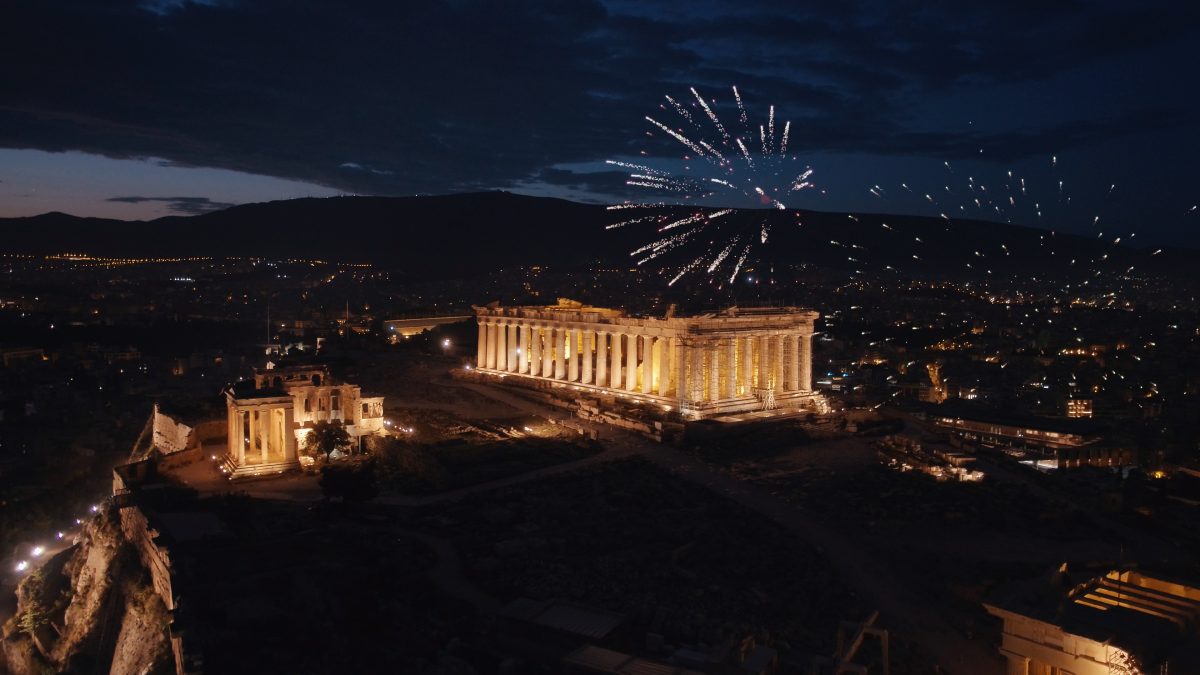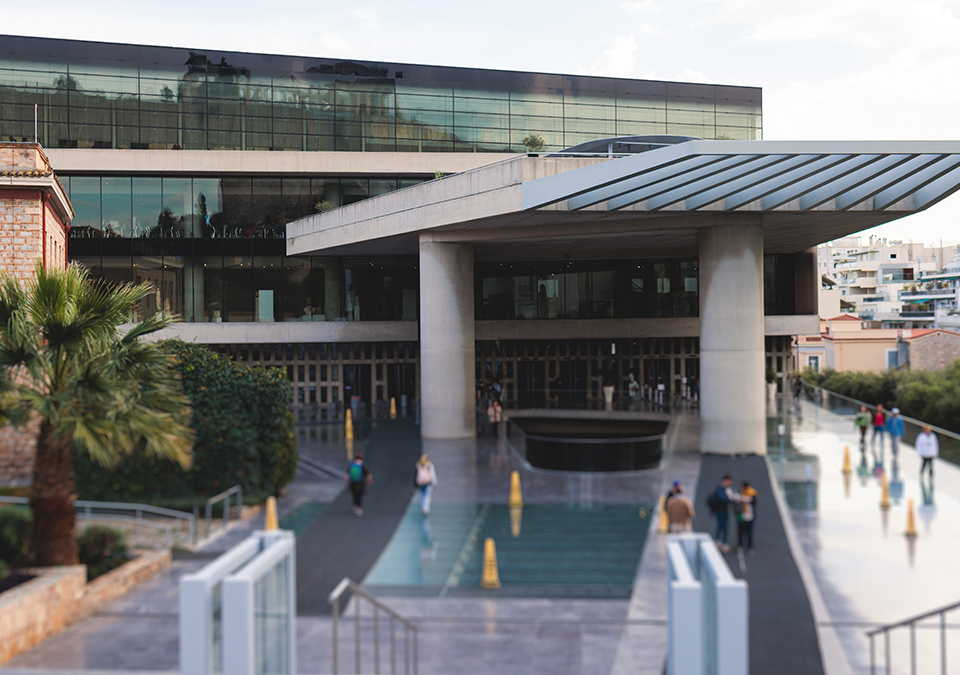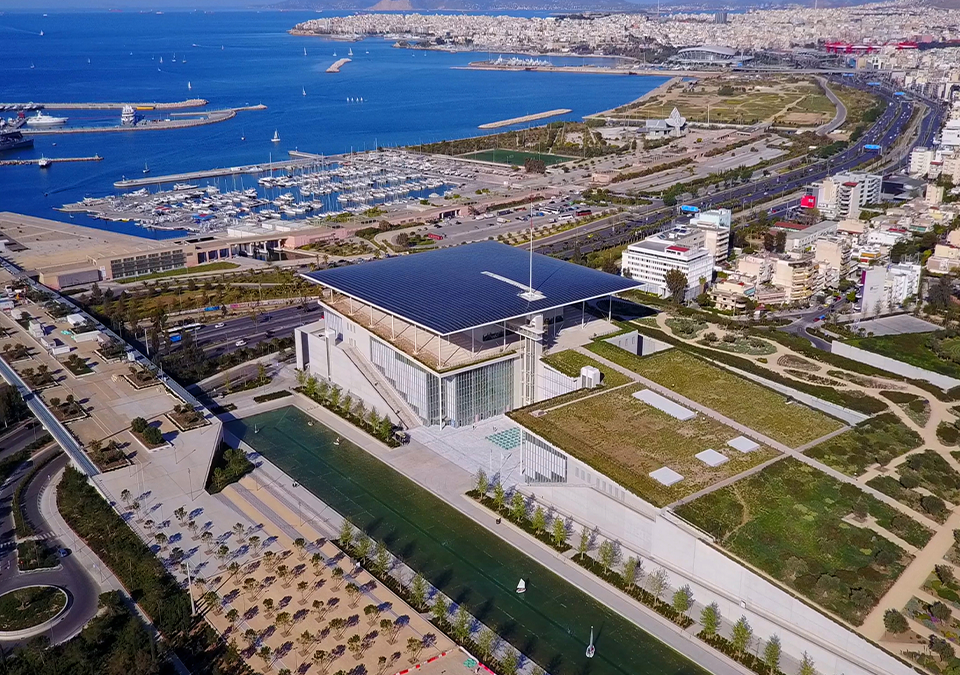Christmas and New Year’s Traditions in Attica

Christmas and New Year: not just another two fest days, a deep emotion instead. The eminent Christmas tree looming over Syntagma Square, but all smaller ones alike, in every square, in every single home. Warm smells, story-telling, ornaments and events, adding that extra color and sparkling. Throughout Attica, long-lasting traditions hand in hand with new ones introduce the brightest days and nights of the year.
In the warm atmosphere of the greek family, the most followed traditions are those for good luck. The customs of first-footing (podariko), the New Year’s cake (vasilopita) with a lucky coin inside and smashing a pomegranate are some of the most known and loved ones. On Christmas and New Year’s eves, children go door-to-door singing carols and shortly before Christmas day, doors are decorated with an embellished wreath made of fir, while kitchens are busy preparing the famous “Christ’s Bread” (Christopsomo).
The traditions of the NY cake and the pomegranate smashing go back to primal eras. During famous rural festivals, ancient Greeks used to offer their gods bread oblations. The custom penetrated into the Christian tradition through Saint Basil the Great, and that is how we still keep it alive; shortly after New Year, the head of the household cuts and shares the cake; the person getting the coin is the lucky one! The smashing of pomegranate, a fruit symbolizing prosperity, good luck and wealth, goes back to the Eleusinian Mysteries, whereas the Christ’s Bread is the sacred bread of the Christmas table, blessing the entire family; its form, shape and decoration depend on local traditions.
In the past, during Christmas and New Year holidays, old Athens used to have an enchanting luster. All Athenians, children and elders, would stroll around the market, not to shop, since everything was much humbler than now, but just to feel the festive vibe. Nowadays, people fill the streets, staying much less at home. Concerts, events, ice rinks, carousels, Christmas villages are only some of the events and places where people spend these days of the year. With the Christmas Tree at Syntagma Square as their starting point, strollers enjoy long walks down-town.
The Attican islands, however, still keep emotions and colors of the old years alive. And although “Attica-landers” celebrate Christmas and New Year with Christmas trees, reindeers, sleighs, snow and Santa Clause, islanders hold on to subtly decorated boats and their marine tradition, giving off a cozy and nostalgic vibe. The scenic islands of the Argo-Saronic Gulf host numerous festivals, praising their local background, giving the chance to the younger to get to know their customs and history and to the elders to commemorate their local culture and traditions.
Unique and sublime, the island of Hydra is really different. Every year, the municipality of the island offers a rich festival schedule, full of concerts, cinema and theater. Early on Christmas, the festive atmosphere runs through the picturesque alleys of the island, whereas, in old times, people used to leave their doors open on the first day of the year, so that the family would welcome the first uninvited visitor to enter the house. Some still keep this custom alive and the head of the family welcomes the visitor by putting a ribbon with a small gift around the visitor’s neck. Of course, the visitor is welcome to join lunch with the family.
On the island of Spetses, the traditional pancakes named “kiourlies”, topped with plenty local thyme honey, and “psomies”, the local Christ’s bread, are a “must” in every home. Christmas decorations adorn the already beautiful areas of Ntapia, Old Port and Kounoupitsa. On the island of Poros, where the beach is filled with small boats, they still believe that the first-foot must be a child, symbolizing guileless youth. The people of Aegina have always had the most remarkable traditions and the most distinctive carols. In the past, they used to dedicate a piece of their NY cake to their livestock and one to their farmland. If the lucky coin had cake crumb on it, that was a sign of a fruitful year and a rich crop. Also, in the New Year’s Eve, they neither washed the dishes, nor cleaned-up the smashed pomegranate; they would also leave food on the table, all these being pledges for a full and wealthy new year.
The practice of first-footing has also been unique and is still alive at the island’s villages. On New Year, visiting other houses was not very common, since the visitor should be a “verified lucky first-foot”, so hosts used to be aware of the expected visits one day before. At the first night of the year, children would return home early and sit around the fireplace, because if they stayed out late, they would be grabbed by “kolotsentes”, the local version of hobgoblins.
All these celebrations come to an end on the day of Epiphany, when waters are blessed and the holy cross is thrown into the sea. This is one of the most notable traditions and gets even more special when experienced on the islands of Attica.
These are only few of the traditions and customs kept alive by the people of Attica, calling visitors to get to know and experience past and new Christmas and New Year celebrations, enjoying a trip sprinkled with festive glitter….




